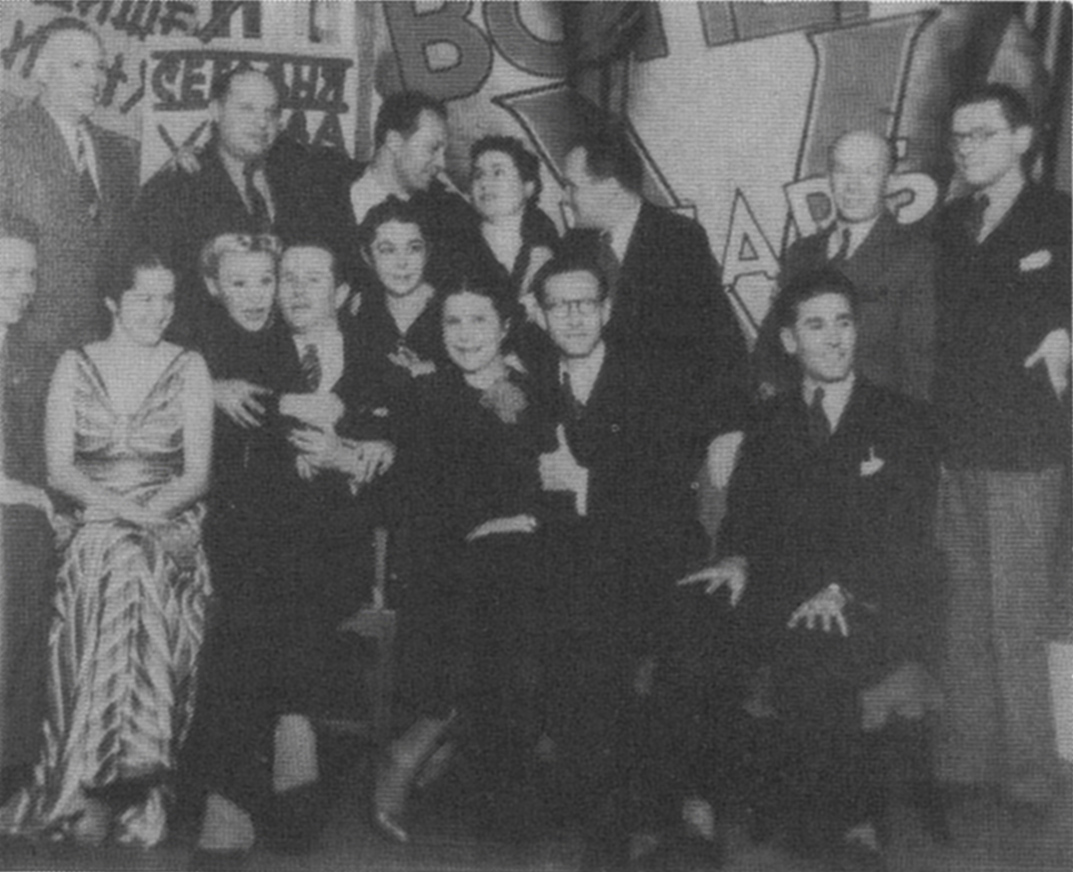Archive
HLAM – Society for Artists, Writers, Entertainers and Musicians
- HLAM – Society for Artists, Writers, Entertainers and Musicians
- Association
As Shanghai’s largest and most popular Russian émigré association focused loosely on art, HLAM provided a platform for weekly encounters between the self-professed bohemians and a general audience. The HLAM evenings included theatre scenes, comic routines, dance numbers and poetry readings.
Word Count: 42
Bohemian Hall, Café-Restaurant La Renaissance, 795 Avenue Joffre, French Concession (now Huaihai Lu, Xuhui Qu); Tkachenko’s (Alcazar) Restaurant, 643 Avenue Joffre (now Huaihai Lu, Xuhui Qu);
Arcadia Cabaret, 291 Route Courbet, French Concession (now Fumin Lu, Jing’an Qu) Shanghai
Wednesday party at HLAM, photography, around 1930 (© Amir Khisamutdinov). 
Portraits of Members of Harbin’s HLAM society, magazine page, photo collage, Piliulia (The Pill), 1922. Abel Bershadsky is at the top left. 
HLAM banquet in a restaurant, photography, around 1930 (© Amir Khisamutdinov). The Russian lettering for HLAM is at the back. La Renaissance restaurant at 795 Avenue Joffre, photography, Modern Miscellany (Shidai), no. 12, 1932. Shtein, Edward. “Hudozhniki russkogo Kitaia, HLAM I Ponedelnik (Russian Artists in China, HLAM and Ponedelnik).” New Review, no. 213. 1998.
Vertinsky, Alexander. HLAM. Dorogoy Dlionnoyu (Those Were The Days). Moscow, 1991.
Knyazeva, Katya. “Miss Shanghai: The Years of Infamy.” Journal of the Royal Asiatic Society China, vol. 79, 2019.
Petroff, Victor. Shanhai na Vampu (Shanghai on the Whangpoo). Washington, 1985.Word Count: 54
- 1933
- 1942
Eduard Eliroff (Polichinelle), Abel Bershadsky, Alexander Kirsanoff, Leonid Skvirsky, Vera Panova-Richter, Vladimir Tretchikoff, Alexander Vertinsky, Thais Jaspar, Eduard Eliroff, Alexander Yaron
- Shanghai
- Katya Knyazeva. "HLAM – Society for Artists, Writers, Entertainers and Musicians." METROMOD Archive, 2021, https://archive.metromod.net/viewer.p/69/2952/object/5145-11304837, last modified: 20-06-2021.
-
Alexander A. YaronDesignerJournalistArtistPhotographerShanghai
An autodidact and a versatile commercial artist, Alexander Yaron applied his talent in portraiture, photography, interior design, advertising, layout and illustration. His best known projects were illustrated art magazines and books produced as part of Adcraft Studios, in tandem with Ivan Kounin.
Word Count: 42
Leonid SkvirskyPhotographerIllustratorShanghaiLeonid Skvirsky was one of the most successful photographic artists in Shanghai. His experimental take on lighting and staging of the models ensured him critical acclaim, awards in international competitions and patronage of the elites.
Word Count: 35
PonedelnikAssociationShanghaiPonedelink was the most influential and the longest-running art society in Shanghai. Committed to promoting awareness of Russian culture and to developing its members' taste and erudition, it published the finest art magazine of the diaspora.
Word Count: 36
Thais JasparArtistShanghaiCombining the vocation of philanthropist with that of an artist, Thais Jaspar was equally at ease among the foreign elites and Soviet diplomats in Shanghai. Her pleasing portraiture was much in demand by her friends and clients.
Word Count: 37